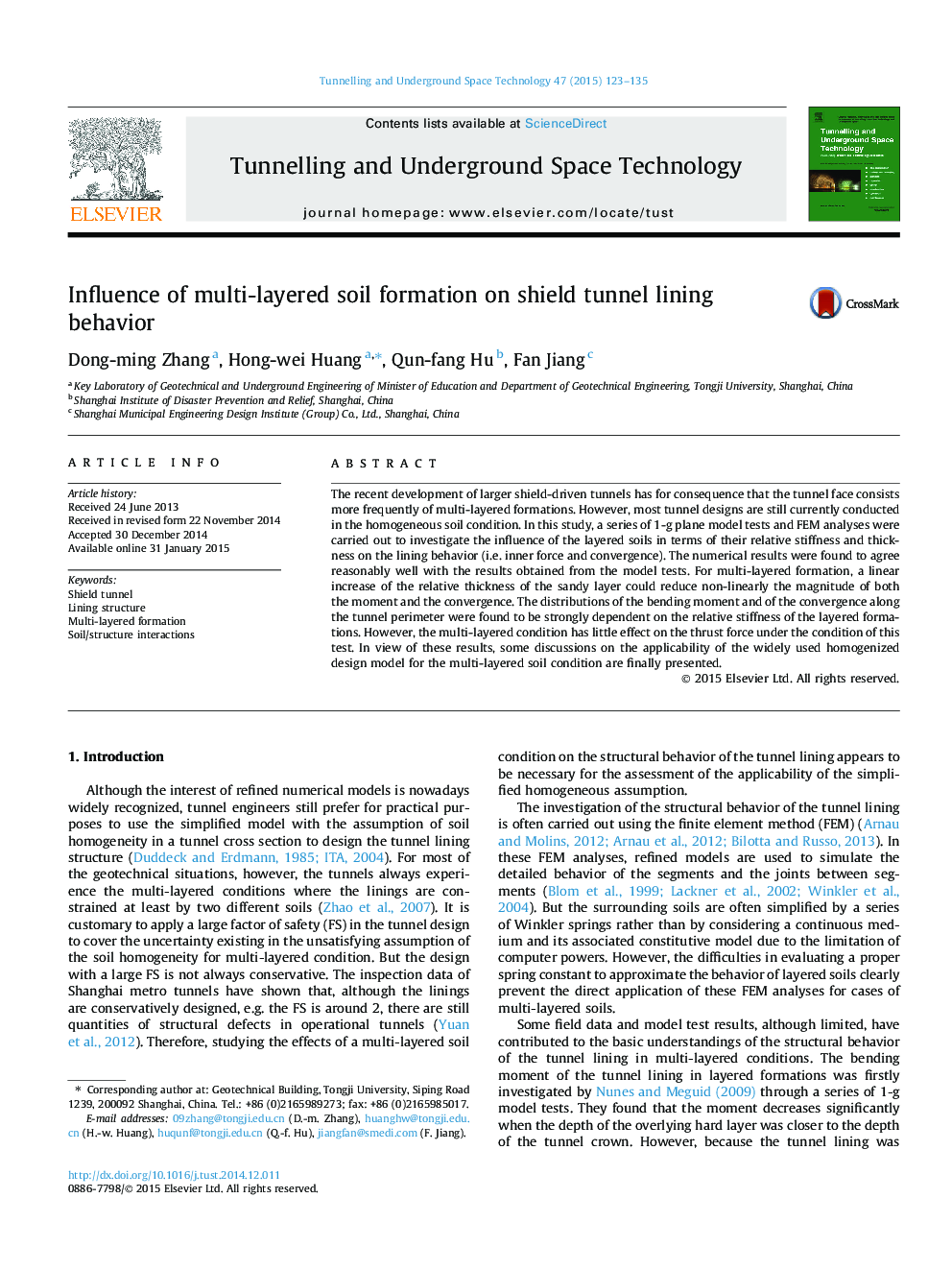| Article ID | Journal | Published Year | Pages | File Type |
|---|---|---|---|---|
| 311792 | Tunnelling and Underground Space Technology | 2015 | 13 Pages |
•Influence of multi-layered formations on tunnel lining is studied.•Results from 1-g model tests and numerical analyses are presented.•The magnitude and distribution of lining behaviors depend strongly on layered conditions.•The applicability of homogeneous design model for layered soil conditions is discussed.
The recent development of larger shield-driven tunnels has for consequence that the tunnel face consists more frequently of multi-layered formations. However, most tunnel designs are still currently conducted in the homogeneous soil condition. In this study, a series of 1-g plane model tests and FEM analyses were carried out to investigate the influence of the layered soils in terms of their relative stiffness and thickness on the lining behavior (i.e. inner force and convergence). The numerical results were found to agree reasonably well with the results obtained from the model tests. For multi-layered formation, a linear increase of the relative thickness of the sandy layer could reduce non-linearly the magnitude of both the moment and the convergence. The distributions of the bending moment and of the convergence along the tunnel perimeter were found to be strongly dependent on the relative stiffness of the layered formations. However, the multi-layered condition has little effect on the thrust force under the condition of this test. In view of these results, some discussions on the applicability of the widely used homogenized design model for the multi-layered soil condition are finally presented.
Graphical abstractFigure optionsDownload full-size imageDownload as PowerPoint slide
